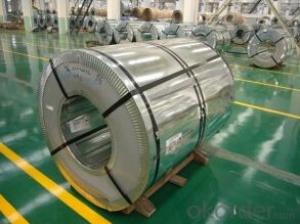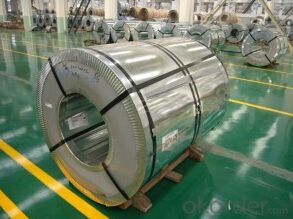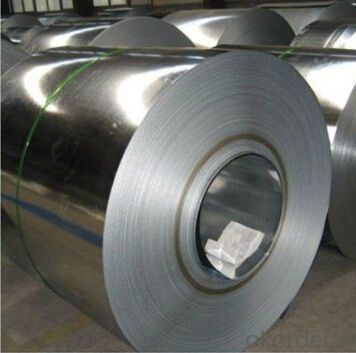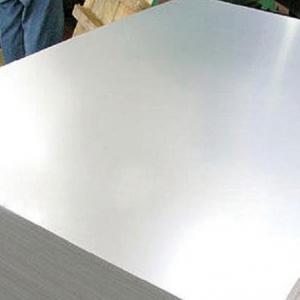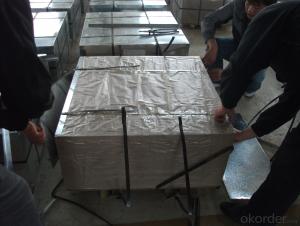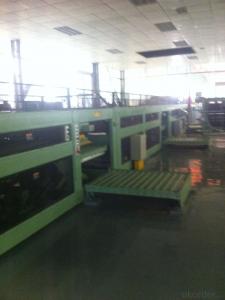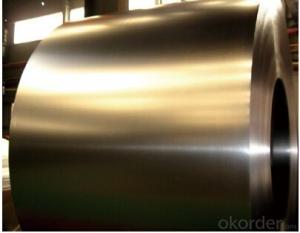Tinplate Coil, Made of MR and SPCC Steel (T-051)
- Loading Port:
- Tianjin
- Payment Terms:
- TT OR LC
- Min Order Qty:
- 25 m.t.
- Supply Capability:
- 10000 m.t./month
OKorder Service Pledge
OKorder Financial Service
You Might Also Like
Description Info.
Model NO.:T-051
Additional Info.
Trademark:HD
Origin:China (mainland)
Product Description
Reference standards: GB2520-88, JIS G3303-1997 and DIN EN10203-91
Materials: MR, SPCC
Thickness available: 0.18 to 1.5mm
Width available: 220 to 915mm
Temper grade: T2-T4
Tin coating: ordinary 2.8/2.8, 5.6g/5.6g, according to customer's requests
Coil diameter:
ID: 508mm
OD: 1,000 to 1,250mm
Package: anti-rust paper, corner protected by sheet or coils according to customer's requirements
Applications: paint, chemical can and other usage can making, battery, electric cable and other industries
FAQ
1.What's your MOQ?
25MT, it is for one container.
2.Do you have QC teams?
Yeah, sure, our QC team is very important, they will keep the quality control for our products.
3. What's your normal delivery time?
Our delivery time about 10-20days for standard sizes, if you have other requirements like hardness and width ,it is about 20-40days. But don't worry ,we also try our best for the delivery time ,because time longer and our cost is higher.
4.Are the products tested before shipping?
Yes, all of our PPGI and GI was qualified before shipping. We test every batch every day.
- Q: How are steel coils used in the production of steel nails?
- Steel coils are used in the production of steel nails by being fed into a nail-making machine, where they are unwound and cut into the desired length. The coils provide a continuous supply of steel material, allowing for efficient and automated nail production processes.
- Q: What are the common methods of storing steel coils in warehouses?
- Warehouses employ various methods to store steel coils, taking into account factors such as coil size and weight, available space, and resources. Here are some commonly utilized techniques: 1. Block stacking: Coils are stacked directly on top of one another in a block formation. Typically, they are arranged in rows and columns, with wooden or rubber blocks inserted between layers to maintain stability and prevent damage. 2. Racking systems: Racks are frequently employed to store steel coils efficiently. These systems encompass different types of racks, such as cantilever racks, coil racks, and structural racks. They provide an organized framework for storing and accessing coils, maximizing space utilization. 3. Coil cradles: Designed specifically for steel coils, coil cradles consist of multiple cradles or saddles that securely hold the coils in place. By stacking these cradles, warehouses can optimize vertical space usage. 4. Coil pads: Coil pads are flat platforms made of materials like wood, rubber, or foam. They are placed on the warehouse floor, serving as a base for directly stacking steel coils. Coil pads distribute the weight evenly while protecting the coils from floor contact damage. 5. Slit coil storage: Specialized storage systems are employed for storing narrower and lighter slit coils. These systems often include racks or shelves equipped with dividers or separators to maintain coil organization and prevent unraveling. It is crucial to observe safety precautions when handling and storing steel coils in warehouses, regardless of the storage method. This entails ensuring proper weight distribution, utilizing appropriate lifting equipment, and adhering to industry-specific guidelines and regulations.
- Q: Can anyone please tell me what is the DUCTILE TO BRITTLE TRANSITION TEMPERATURE IN STEEL LOW CARBON?Thanks.
- whilst metallic generators make it the technique is watched interior sight the aggregate warmth, Time in the previous the pour. some steels are run in vegetation that mixture in basic terms for solid demanding product. maximum any simple metallic may be greater effective in its hardness via heating and dipping into oils or water then do it over many cases.To make your question undeniable all metallic is simple except they technique it to be greater good or that's hardened via a warmth treating technique at a later date.
- Q: How are steel coils used in the production of scaffolding?
- Steel coils are used in the production of scaffolding as they are typically cut and shaped into various components such as tubes, frames, and brackets. These coils provide the necessary strength and durability required for scaffolding structures, ensuring the safety and stability of workers who use them.
- Q: What is the major disadvantage of hardened steel? Do you think this form of iron would be wear resistant and retain a sharpened edge?
- The major disadvantage of hardened steel is that it is very brittle unless it is tempered. Hardened steel would be wear resistant, and would hold an edge as long as you don't cut anything harder than a boiled egg - the impact of the knife on a cutting board would shatter it.
- Q: How are steel coils used in the production of metal cabinets?
- Steel coils are used in the production of metal cabinets as they serve as the primary raw material. These coils are unwound and cut into precise lengths, which are then formed, shaped, and welded to create the various components of the cabinet, such as the sides, back, and shelves. The steel coils provide the necessary strength, durability, and rigidity required for the construction of sturdy and long-lasting metal cabinets.
- Q: What are the common coil widths available for steel coils?
- The common coil widths available for steel coils typically range from 24 inches to 72 inches, with 36 inches and 48 inches being the most common options.
- Q: How are steel coils protected against corrosion?
- Steel coils are protected against corrosion through various methods such as applying protective coatings, galvanizing, or using corrosion inhibitors. These measures help to create a barrier between the steel surface and the surrounding environment, preventing the onset of corrosion and extending the lifespan of the coils.
- Q: i need a company that sells strong steel doors because my neighbors apartment was broken into. I need a strong steel door for the outside of the home, where you first enter. please list places in the US, or in NY.
- Actually, the best doors are fiberglass. Steel doors are not solid steel. The steel is a skin, over framing and insulation. The cheaper doors have thinner steel skins.. That is why they get dented. Go to a real lumber yard. Home Depot and Lowes specialize in low price, not high quality. I use a brand, called Thermatru, that is available in New England. I am sure there are comparable brands. I don't care for Stanley. Stanley makes hammers. They bought a door factory and stick their name on the doors. Good luck.
- Q: My uncle got me some new 'Nam style jungle boots at the px at Fort Worth JSB, and he told me that back in Vietnam, they used to issue guys steel sole boots, that had a sole reinforced with a steel plate, as punji stick d-fence. Is this true, it sounds logical, but I can't figure out how a steel plate in the sole would work. My uncle is kind of a BS'er, plus he wasn't even in Vietnam, much less the Infantry, much less combat, but he was in USAF at the time.
- The issue of steel soled boots in Vietnam did actually happen. The steel plate is in the mid-sole, to prevent punji sticks (or other sharp objects) from penetrating the boot if you stepped down on them. These bamboo or metal spikes - often coated with human excrement - were placed in shallow (camouflaged) pits dug in the ground or sometimes under water at places where you'd ford a stream. Quite apart from the physical injury from stepping on one, there was a high risk of serious infection from what they were coated with. Originally the steel plate was issued as an insole to go inside but that give the soldiers blisters, so later the boots were manufactured with it as part of the sole. Steel toe-cap boots containing a mid-sole plate are sold today for use by builders and construction workers who have a similar risk of stepping on nails, screws, glass, etc.
Send your message to us
Tinplate Coil, Made of MR and SPCC Steel (T-051)
- Loading Port:
- Tianjin
- Payment Terms:
- TT OR LC
- Min Order Qty:
- 25 m.t.
- Supply Capability:
- 10000 m.t./month
OKorder Service Pledge
OKorder Financial Service
Similar products
Hot products
Hot Searches
Related keywords
